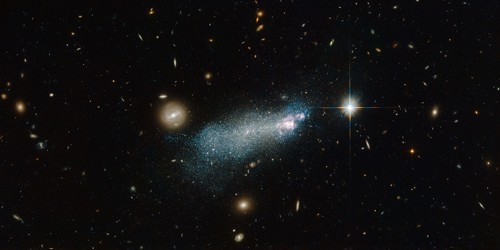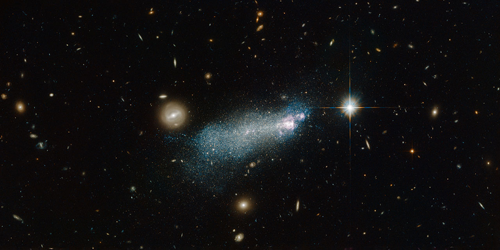Tackling the Small-Scale Crisis
The current paradigm for describing cosmological evolution, known as the CDM model, successfully explains the large-scale structure of the Universe—the organization of galaxies into clusters, sheets, or filaments separated by giant voids. However, CDM predicts more small-scale structures, such as dwarf galaxies, than are actually present—a problem called the "small scale crisis." Tomohiro Nakama of Johns Hopkins University, Maryland, and colleagues now suggest that measurements of the spectrum of the cosmic microwave background (CMB) could shed light on the causes of the small-scale crisis.
The structures in the present Universe derive from density fluctuations in the early Universe. The dearth of small-scale structures may imply that some exotic mechanisms suppressed such fluctuations on small length scales. These mechanisms could be primordial, related to unknown processes occurring during cosmic inflation in the very early Universe. Alternatively, density-fluctuation suppression may have happened later, possibly caused by warm forms of dark matter or by the interaction of dark matter with visible matter.
Nakama and his co-workers argue that early- and late-time suppression mechanisms could, in principle, be distinguished through precise measurement of the CMB’s frequency spectrum. This spectrum is extremely close to that of an ideal blackbody. However, suppression of density fluctuations would cause spectral distortions, characterizable through a “chemical potential” called . According to the team’s calculations, would be very small or negative for primordial suppression, while it would have larger positive values for late-time suppression.
This research is published in Physical Review D.
–Matteo Rini
Matteo Rini is the Deputy Editor of Physics.





